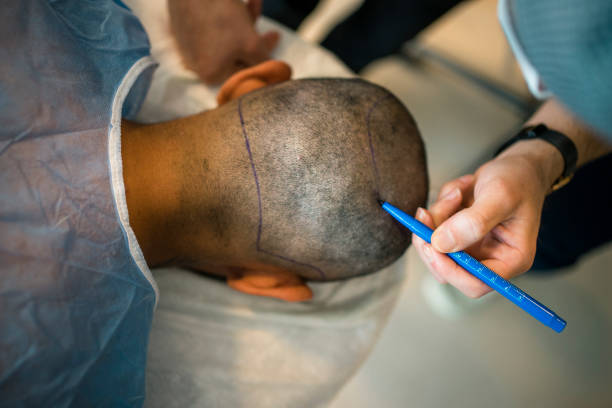
Hair transplants are procedure that moves hair to the areas that are bald or thin on the scalp. It's also known as hair restoration or hair replacement. The procedure is generally recommended for those who have attempted other methods of treating hair loss. Hair transplants are done by dermatologists (healthcare professionals who specialize in skin care) and plastic surgeons (healthcare specialists that specialize in reconstructive surgery).
A healthcare provider will take the form of grafts (or tiny sections of skin) from areas with healthy hair. The area that is referred to as the donor site by doctors. This is usually located in the rear of your hair, which is where hairs that are thickest tend to grow. The health professional transfers the grafts to hairless parts of the scalp. The skin transplanted will keep growing hair once it is healed.
What conditions does hair repair surgery treat?
There are a variety of reasons why you might lose your hair. Sometime, hair loss is temporary, however it may be permanent. Permanent hair loss can be treated with hair implants
Alopecia areata is an autoimmune disorder that affects hair follicles.
Pattern baldness is also known as androgenic alopecia , or pattern hair loss.
The thyroid is a common cause of hormonal imbalances or thyroid disorders.
Traumatic injuries or burns.
Who can be a candidate to get their hair replaced?
If you are:
Are in good health.
Be realistic with your expectations for the results of hair replacement.
You may still have patches of thick hair growth on your scalp.
What are the various types of hair transplant surgeries offered?
There are a variety of ways to carry out hair transplant surgery. Whenever you want a useful source about hair restoration denver, navigate to this website.
Grafting.
Reduced scale
Flap surgery.
Tissue expansion.
What is the procedure to use for grafting?
Hair grafting is the most common type of hair restoration Doctor surgery. The doctor will remove healthy hair from the scalp. They may use a small, circular punch to cut off the skin that contains between 10 and 15 hairs. The grafts were previously referred to as "hair plugs" by the public. Micro-grafts consist of one to two hairs.
The procedure could take several hours. The majority of patients remain awake during the procedure but they receive medication to reduce the pain of their scalp. It is possible to have multiple procedures depending on the amount of hair you need to move. Between procedures your scalp needs to heal for a few months.
How do you reduce the hair's appearance?
Alopecia reduction can also be referred to as scalp reduction by doctors. The procedure involves surgeons remove a tiny portion of skin that is bald off the scalp. The surgeon removes hair from the area that is bald by cutting off any skin near it. They stitch it into the desired location.
Scalp reduction is an excellent alternative to treat areas of hair loss in the front or the top of the head. These are generally surrounded by skin with hair. Sometimes providers use scalp reduction as well as hair implants together to get complete coverage. Scalp reduction is similar to the process of grafting. It typically requires the use of numbing medications. It doesn't require general anesthesia.
What exactly is flap surgery?
If you have significant areas of baldness close to the scalp's front Your doctor may suggest flap surgery. The flap surgery is performed in multiple stages over a couple of weeks. The surgeon will make small cuts on three sides of the donor's site. The fourth is left in place to the donor site, preserving its original blood supply. This technique helps the surgeon cut the flap, and then lift it over bald areas. General anesthesia is required for flap surgery.
How is tissue expansion performed?
The doctor may recommend the procedure of tissue extension in case you suffer from scalp baldness, disfigurement or burns. Tissue expansion is a procedure that requires general anesthesia. It involves many steps.
A reconstructive surgeon inserts an implant underneath the scalp, and hair loss still remains. Shaped like a balloon, they refer to it as an expander for tissue.
The skin is stretched slowly over a period of time with the help of an expander.
The surgeon then performs another procedure that covers the areas of hair loss with the stretched skin.
